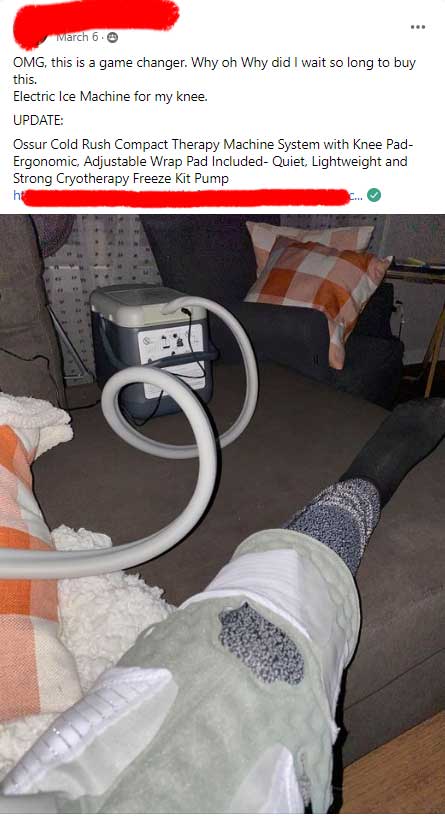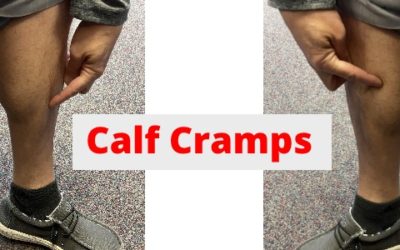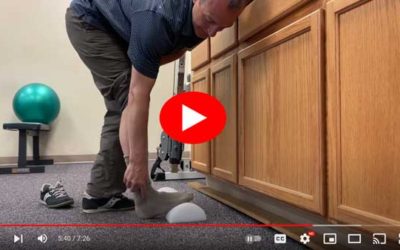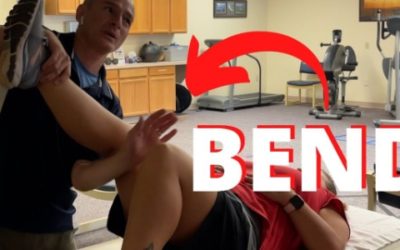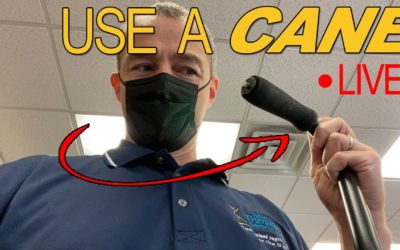How Painful Is A Total Knee Replacement
Patients have told me that a total knee replacement is more painful than a total hip replacement but less painful than a total shoulder replacement.
The pain is most intense during the first 48-72 hours after surgery. The pain improves steadily over the next 2-6 weeks.
Your surgeon and medical team should be notified if your pain is more intense than a 7 out of 10 on a pain scale with 10 being the highest intensity.
How Painful Is A Total Knee Replacement?
What you can expect:
Pain will fluctuate based on time, medication, activity, and more.
On a 0 to 10 pain scale with 0 being no pain and 10 being the most intense pain possible the first 48 to 72 hours after surgery is often described as a 7/10.
7/10 Pain is “Can’t be ignored for any length of time, but you can still go to work and participate in social activities.”
The pain will often vary between 3/10 – “Annoying enough to be distracting” at the low end up to an 8/10 “Physical activity severely limited. You can read and converse with effort. Nausea and dizziness set in as factors of pain.”
How much pain is normal and when should I be concerned?
If your pain is not improving on a daily basis during the first 2 weeks then you should consult with your surgical team for further assessment.
If your pain is so intense you are experiencing increased blood pressure, difficulty breathing or shortness of breath, and nausea you must contact your surgical team.
Here is a short video describing “normal pain after a total knee replacement.”
3 Strategies to Reduce Post Surgical Pain
1. Cryotherapy –
Cryotherapy is icing the knee or cooling the knee to reduce pain. Cryotherapy is the most popular non-pharmaceutical pain relief method recommended by nearly all surgeons after total knee replacement surgery.
This can be done with Chattanooga ColPac Gel Packs, ziplock freezer bags filled with crushed ice, or an Ossur Cold Rush Compact Therapy Machine.
While the clinical evidence may not fully support all of the claimed benefits of cryotherapy, there are many subjective reports from actual patients suggesting significant pain relief when using cryotherapy. [1]
2. Compression –
This can feel soothing and relaxing to a swollen and painful knee. Compression may be performed using a 6-inch wide elastic wrap or a velcro enclosure.
Compression helps maintain the warmth around the knee as well as reduce swelling and provide a counter-pressure to the outward forces generated by internal swelling.
These compressive wraps should be comfortable and may be used for as little as 10-minutes or as long as several hours.
A simply spiral wrap starting approximately 6 inches below the knee and progressing to 6 inches above the knee is common. I recommend a minimum of 6 inches wide elastic wrap with a 50% overlap to improve comfort.
3. Distraction –
Staying busy and keeping yourself occupied is one of the best pain management strategies available.
Hobbies, passion projects, and helping others are great ways to take your mind of the commonly experienced pain sensations associated with post-surgical recovery.
I have found that when patients have something else to do that isn’t too taxing and must be done by you and only you the body responds in positive ways.
Another part of managing the pain is understanding what is causing the pain.
There are several contributing factors to the pain and sessions you will be feeling after surgery.
Pain associated with the incision –
As your incision heals there will be different sensations coming from the skin and incision site. There will be itching, redness, and soreness. As the body heals the skin, there is an immune response that causes chemical changes in the skin and as a result inflammation and pain.
Being able to differentiate between normal healing of the skin and possible complications or infection might help reduce the actual pain associated with this process.
Signs of infection include:
-
- Foul odor
- Excessive seepage
- Increasing redness and warmth
- Increasing pain
- Increased body temperature
If you experience one of more of these symptoms then contact your surgical team.
Pain associated with bone healing –
During the procedure, the ends of your femur and tibia are mechanically removed and the implants are hammered and cemented into place. Often bone spurs are shaved off and your bone is placed under significant amounts of stress.
This bone trauma takes time to heal and is unseen to the naked eye. It is normal to have deep bone-associated pain for several weeks after surgery.
Pain above or below the surgery site.
Some surgeons use a tourniquet to reduce blood loss during surgery. This results in major soft tissue damage to the thigh musculature.
Alternatively, many patients experience significant pain in the calf and shin below the knee. This may be attributed to the new leg alignment or new walking patterns.
Both the upper leg pain and lower leg pain are frustrating and sometimes said to be worse than the knee pain.

References:
1. Markert SE. The use of cryotherapy after a total knee replacement: a literature review. Orthop Nurs. 2011 Jan-Feb;30(1):29-36. doi: 10.1097/NOR.0b013e318205749a. PMID: 21278552.
About the Author -
Anthony Maritato, PT has been a licensed physical therapist since 2006. He specializes in post surgical care and rehabilitation of total knee replacement and rotator cuff repair surgery.
Mr. Maritato is also nationally recognized as a therapist educator teaching courses related to Medicare reimbursement, contracting, and documentation.
Total Therapy Solutions LLC is Tony's primary practice which he owns with his wife Kathy who is also a licensed physical therapist.
More Blog Posts …
Knee Pain 1 Year After Knee Replacement Surgery
Nearly 20% of patients who have undergone total knee replacement are not happy with the outcome. [1] Dr. Scott Albright, MD. Dr. Albright is a non-surgical orthopedic specialist and in my opion one of the best sports medicine doctors in Middletown, Ohio. He has...
Is a recumbent bike good for knee replacement?
Riding a recumbent bike after a total knee replacement can be a great way to increase range of motion, increase cardiorespiratory fitness, and improve overall well being. In this video I explain some tips and tricks we use in the clinic to help clients maximize the benefit of riding this bike.
Calf Cramps How to STOP Calf Cramps
How to Stop Calf Cramps at Night When They are Happening One of the must frustrating times to get a calf cramp is in the middle of the night. You may be sound asleep when all of a sudden you experience this intense shooting pain which causes you to draw up in writhing...
3 TIPS to STOP Ankle Pain After Knee Replacement Surgery
Ankle pain after total knee replacement surgery is very common. Osteoarthritis of the knee causes the knee to change shape over time. The knee replacement surgery will correct any malalignment of the knee, but it causes excessive stress on the ankle and hip. In this...
Is a Manipulation Under Anesthesia MUA Painful
No, during a manipulation under anesthresia after a total knee replacement you will be placed under sedation and the procedure is painless. During the following 24 to 48-hours you may feel some increased soreness and swelling, but very few patients actually reqort...
Recovery After MUA Manipulation Under Anesthesia [VIDEO]
Video SeriesAnthony Maritato, PT has been a licensed physical therapist and private practice owner since 2006. Ohio license #PT011602. Anthony has been passionate about helping patients recover from total knee replacement surgery as well as rotator cuff repair surgery.
Hip and Groin Pain After Total Knee Replacement Surgery
I couldn't find peer-reviewed data to support an answer to this question, but as a physical therapist with 20 years of history in the clinic, I can tell you that anterior hip and groin pain after a total knee replacement is not uncommon. As of writing this article on...
2 Reasons why your knee replacement sounds like Velcro tearing!
The two reasons why your total knee replacement sounds like Velcro tearing when standing up from a chair or walking downstairs are because the underside of your patella is rubbing against the bottom of your femur or you are experiencing the sensation of scar tissue...
When can I switch from a walker to a cane?
Between 10 and 14 days after total knee replacement surgery, most patients have switched from a walker to a cane. Of course, some patients never use a cane and just progress from the walker to no assistive device after a couple of days, while other patients depend on...
When can I walk upstairs normally after TKR?
Article Updated: 09/02/2023Walking Upstairs Post-Op Throughout my extensive career as a physical therapist specializing in total knee replacements, I've observed a consistent pattern: the 10-week post-operative mark often serves as a significant milestone for...
